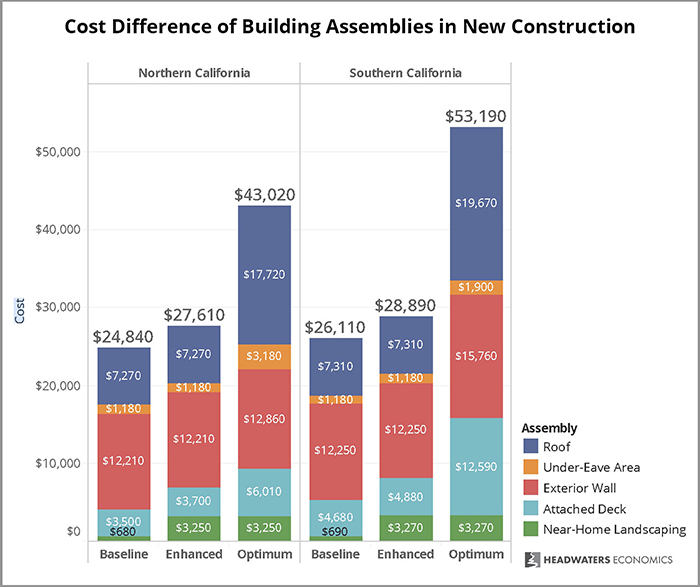August 30 Digest: This Week in Wildfire Recovery News
This is a digest of selected news and media that emerged over the last week related to wildfire emergencies, recovery efforts, and resilience building efforts in the American West.
Fire threatening over 7,000 structures in southwest Oregon
From East Oregonian, AP News | August 30, 2022
The Rum Creek Fire in remote southwest Oregon has burned nearly 12,000 acres, is threatening thousands of homes and is only about 1% contained.
As of Tuesday morning, the Northwest Interagency Coordination Center said 5,035 homes and more than 2,600 other structures were at risk, Oregon Public Broadcasting reported. Officials have said the fire has destroyed one home and two structures.
Northern California wildfires: Where to find updates on air quality, evacuations, and official information
From CAP Radio | August 29, 2022
This post will be updated with the latest information on current fires when it is made available.
Debris, ash removal from Marshall Fire burn area is complete
From CBS Colorado by Jennifer McRae | August 24, 2022
The public debris removal program following the Marshall Fire in Boulder County, CO is now complete, after the contractor completed the job of clearing 566 properties and over 103,000 tons of ash and debris.
Inside the Investigation That Secured a Guilty Plea for 84 Wildfire Deaths
From Wall Street Journal by Katherine Blunt | August 25, 2022
An excerpt from from “California Burning: The Fall of Pacific Gas and Electric—and What It Means for America’s Power Grid” by The Wall Street Journal’s Katherine Blunt, to be published on Aug. 30 by Portfolio, an imprint of Penguin Publishing Group, a division of Penguin Random House LLC. Copyright © 2022 by Katherine Blunt.
Western wildfires are increasingly destroying structures, analysis shows
From KUNR Public Radio by Kaleb Roedel | August 29, 2022
Illustrating the human impact of wildfires, a new research report from nonprofit Headwaters Economics shows the number of structures destroyed in every state from 2005 to June 2022. “The true impacts felt at the ground level is important for policy conversations because it brings in the human dimension in a way that examining acreages burned does not,” said Headwaters Economics Kimiko Barrett said.
Clackamas County group assisting families in rebuilding their homes destroyed by wildfires
From KGW8 by Christelle Koumoué | August 23, 2022
The Clackamas County Long Term Recovery Group, formed two years ago in the wake of the 2020 wildfires in Oregon, has now completed their second volunteer-rebuilt home. The program is funded largely by private businesses and non-profits and serves as a lifeline in the wake of the 2020 wildfires.
Foundation announces another $500,000 to help rebuild homes for Dixie Fire victims
From Plumas News | August 26, 2022
The North Valley Community Foundation and the Dixie Fire Funders Roundtable have issued nearly $1.2 million in 39 new grants toward the recovery.
Washington Fire one year later: Evacuation plans among lessons learned
From Union Democrat| August 29, 2022
The Washington Fire in Tuolumne County revealed that there is a need for enormous amount of coordination for recovery efforts at the time of the fire and after.
“Tuolumne County OES had never been through recovery of displaced residents prior to the Washington Fire, and we now understand the state resources better and the process for providing recovery assistance to property owners.” Residents need better information from officials to evacuate and make prevention plans.
AI, GPS Technology Could Help Save Lives in Wildfires and Floods
From The Wall Street Journal by Jim Carlton | August 30, 2022
Destructive natural disasters add urgency to researchers’ efforts to find better ways to get warnings out fast, even in remote areas
Technology innovations are helping emergency managers find effective ways to prepare and notify people in times of climate disaster, from fires to hurricanes to floods. But these innovations are not a one size fits all approach, and their success depends on many factors. After the Fire's Jennifer Gray Thompson is quoted in this article about the need for simple old fashioned approaches in combination with these new tools and techniques.
How to Track Wildfires in California, Oregon and across the U.S. with Esri's new mapping tool
From Fast Company by Connie Lin | August 30, 2022
Marshall Fire equity map shows 'high risk households' in most need for resources
From 9News | August 25, 2022
Construction costs for fire-resistant home in California
From Wildfire Today | August 29, 2022
With content reprinted with permission from the nonprofit Headwaters Economics, this article compares the cost of rebuilding a home at three different levels of fire resilience: Baseline, Enhanced and Optimum.
Access the full report from Headwaters Economics
CalFire launches online platform for viewing vegetation management programs
From KCRA, by Heather Waldman | August 26, 2022
CALFIRE has created a new Fuels Reduction Project Viewer to display programs that are being executed by CalFire crews or funded by CalFire grants. Eventually, the hope is to incorporate projects from other land management agencies.
Climate Change is Making Wildfires Worse — Here’s How
From NC State University College of Natural Resources News, by Andrew Moore | August 29, 2022
Professor of Forestry Robert Scheller outlines key issues related to climate change, increasing intensity of wildfire and drought in the Western United States, requiring a change in how we mitigate for fire and battle them when they occur, and public education about the risks and preventive measures they need to understand.
CA wildfire insurance 'loophole' impacting Bay Area survivors
From Yahoo! News, by Andrew Moore | August 27, 2022
The regulation proposed by the state's Insurance Commissioner Ricardo Lara in February would mandate that all insurance companies have to give California consumers discounts for reducing their wildfire risk - also known as "hardening your home."


